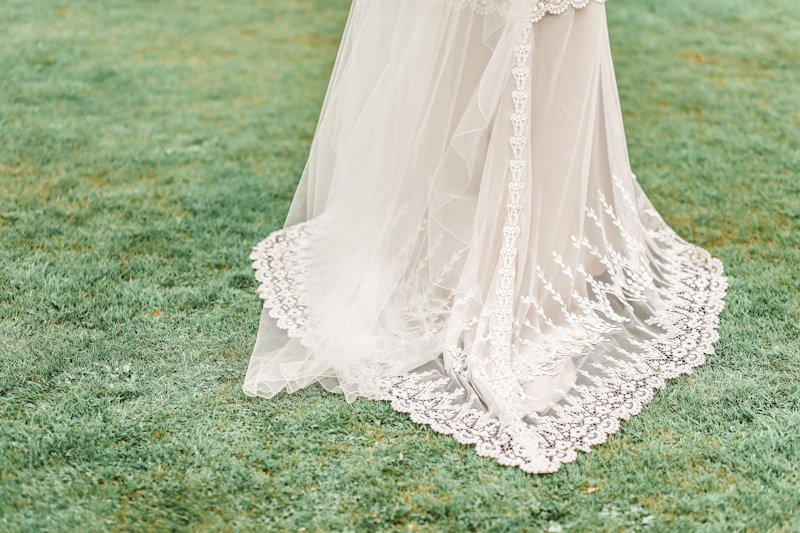Navigating the Wedding Dress Market: A Comprehensive Guide for Brides-to-Be
Navigating the Wedding Dress Market: A Comprehensive Guide for Brides-to-Be
Finding the perfect wedding dress is one of the most exciting yet daunting tasks for brides-to-be. The wedding dress market is vast and diverse, catering to various styles, budgets, and personal preferences. In this article, we will navigate through the intricacies of the wedding dress market, covering essential aspects that every bride should consider. From understanding different styles to knowing when to start shopping, we aim to equip you with all the information you need for a happy, stress-free experience.
Understanding Wedding Dress Styles
The first step in navigating the wedding dress market is to understand the various styles that are available. Here are some of the most popular styles, each with its unique features:
| Style | Description |
| A-Line | Fitted at the waist and flows out to the ground, resembling the shape of an uppercase "A". |
| Mermiad | Fitted through the bodice and hips, flares out at the knee, perfect for accentuating the curves. |
| Ball Gown | Classic style with a fitted bodice and a voluminous skirt, ideal for a fairy-tale wedding. |
| Sheath | Straight and narrow fit that flows to the floor, suitable for modern brides. |
| Tea Length | Falls between the knee and the ankle, a playful option for a less formal wedding. |
The Importance of Budgeting
Budget is a crucial factor in the wedding dress market. Setting a realistic budget helps narrow down options and reduce stress during the shopping process. In general, wedding dresses can range significantly in price, from budget-friendly to luxury designer options. Here’s a simple breakdown:
- Budget-friendly dresses: $500 - $1,000
- Mid-range dresses: $1,000 - $3,000
- Designer dresses: $3,000 and above
Before diving into the wedding dress market, create a budget that considers all associated costs, including alterations, accessories, and cleaning fees. Having a solid understanding of your finances will make choosing the right dress easier.

When to Start Shopping
Timing is everything when it comes to purchasing a wedding dress. It is advisable to start shopping at least 6 to 9 months before your wedding date. This allows ample time for purchasing, fittings, and possible alterations. If you are considering a custom-made dress, you might want to start even earlier—up to a year ahead.
Also, consider the peak wedding season in your area. For example, if you are planning a wedding in the summer months, you may want to start your search in the fall or winter prior to your wedding year. This way, you can avoid the rush and secure the dress of your dreams.
Understanding Your Body Shape
Every bride is unique, so understanding your body shape is vital for making the right choice in the wedding dress market. Here are some common body shapes and the corresponding dress styles that typically complement them:
| Body Shape | Recommended Dress Style |
| Pear | A-line or ball gown to balance proportions. |
| Apple | Empire waist or sheath style that draws attention to the bust. |
| Hourglass | Mermaid or fit-and-flare styles that accentuate curves. |
| Rectangle | A-line or ball gown to create the illusion of curves. |
Bringing Your Vision to Life
Your wedding dress should reflect your personality and aesthetic. One helpful way to visualize your dream dress is to create a mood board using magazine clippings, fabric swatches, and color palettes. This can be a fun activity that allows you to clarify your vision and better communicate it to the bridal consultants at shops.
The Role of Bridal Consultants
Bridal consultants can be invaluable resources in the wedding dress market. They possess expertise and experience, allowing them to guide you through the selection process. When visiting bridal boutiques, come prepared with questions, and be open to their suggestions. Remember, their goal is to help you find a dress that makes you feel beautiful and confident on your wedding day.
Alterations: An Essential Step
Once you’ve found the perfect dress, alterations are an essential step in ensuring the dress fits your body perfectly. Most bridal shops include basic alterations in the dress price, but it’s important to confirm this during your fitting. Common alterations include hemming, taking in the sides, and adjusting the neckline.
Scheduling your alterations several weeks before your wedding day will help alleviate last-minute stress.
Accessorizing Your Dress
Once you have your wedding dress sorted, it’s time to think about accessories. The right accessories can elevate your look and add a personal touch. Consider options such as:
- Veils: Veils vary in length and style and can complement your dress beautifully.
- Jewelry: Choose statement jewelry that fits your dress style without overpowering it.
- Footwear: Select shoes that are comfortable yet stylish, as you’ll be on your feet most of the day.
Try to coordinate your accessories with your dress style to achieve a cohesive look.
Final Thoughts
Navigating the wedding dress market can be overwhelming. However, understanding the various styles, setting a budget, and knowing when to shop are critical steps in ensuring a successful search. Pay attention to your body shape and consult with professionals for the best outcomes. Remember, your wedding day is about you and your happiness, so find a dress that you love. Don’t forget to start early and allow for alterations and accessorizing that complement your chosen gown. With a well-planned strategy, your journey to finding the perfect wedding dress will be an unforgettable experience.
In conclusion, the wedding dress market is vast but manageable with the right information. By following the guidelines outlined in this article, brides-to-be can confidently traverse this exciting phase of their wedding planning journey.
Happy dress hunting!
